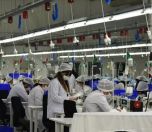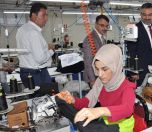Click to read the article in Turkish
The Research Center of the Confederation of Progressive Trade Unions of Turkey (DİSK-AR) has published a report regarding the gap between labor productivity and wages in Turkey over the years.
Prepared based on the September 2020 figures released by the Presidential Department of Strategy and Budget, the DİSK-AR report has shown that the gap between productivity and wages has been widening.
In other words, while workers are producing more and more, this increase in the labor productivity does not lead to an increase in their wages.
While the labor productivity in the industrial sector has increased by 51.1 percent from the 1st quarter of 2012 to the second quarter of 2020, the increase in real wages has been measured as 14.8 percent.
Sharing information about how unit wages and unit productivity index are calculated, announced and updated by the Department of Strategy and Budget, the report has reiterated that "according to the total unit wage in industry index, the increase in productivity is not reflected in wages."
Some findings from the report are as follows:
"Tending to widen since 2012, the gap between productivity and wages kept on widening in the 2nd quarter of 2020 as well. While hourly labor productivity has increased by 51.1 percent since 2012, the real wages of workers have witnessed an increase of only 14.8 percent.
"When the year 2020 is taken as 100 units, the increase in wages was usually less than the increase in labor productivity. It is seen that this process has gained pace after 2016 and a great difference has been observed with the onset of the 2018 financial crisis.
"What is striking is that the unit productivity, which was 133.6 in the 2nd quarter of 2019, increased to 151.1 in the 2nd quarter of 2020 despite the outbreak. However, in the same period, wages increased from 113.7 to 114.8. While productivity has increased by 17.5 points over the last year, real wages have increased by only 1 point. As of the 2nd quarter of 2020, the gap between productivity and real wages has hit 36.3 points.

*Hourly labor productivity and real wage index (2012-2nd Quarter of 2020) /
Year - Quarter - Hourly Labor Productivity Index - Real Unit Wage Index
"While the hourly labor productivity index was 100 in the 1st quarter of 2012, it has regularly increased over the years and become 151.1 in the 2nd quarter of 2020. As for the hourly unit wage index, which was 100 in the 1st quarter of 2012, it has become 114.8 in the 2nd quarter of 2020. That being the case, while the hourly labor productivity has increased by 51.1 percent in the last 8 years, hourly real unit wages have increased by only 14.5 percent.
"In summary, the increase in real wages has fallen behind the increase in productivity. Workers have worked more, they have produced more, but they cannot get a share from this increase. Therefore, exploitation has intensified in the industry. While workers have produced 51 percent more than they did in 2012, this increase in production has not been reflected in wages." (HA/SD)







as.jpg)